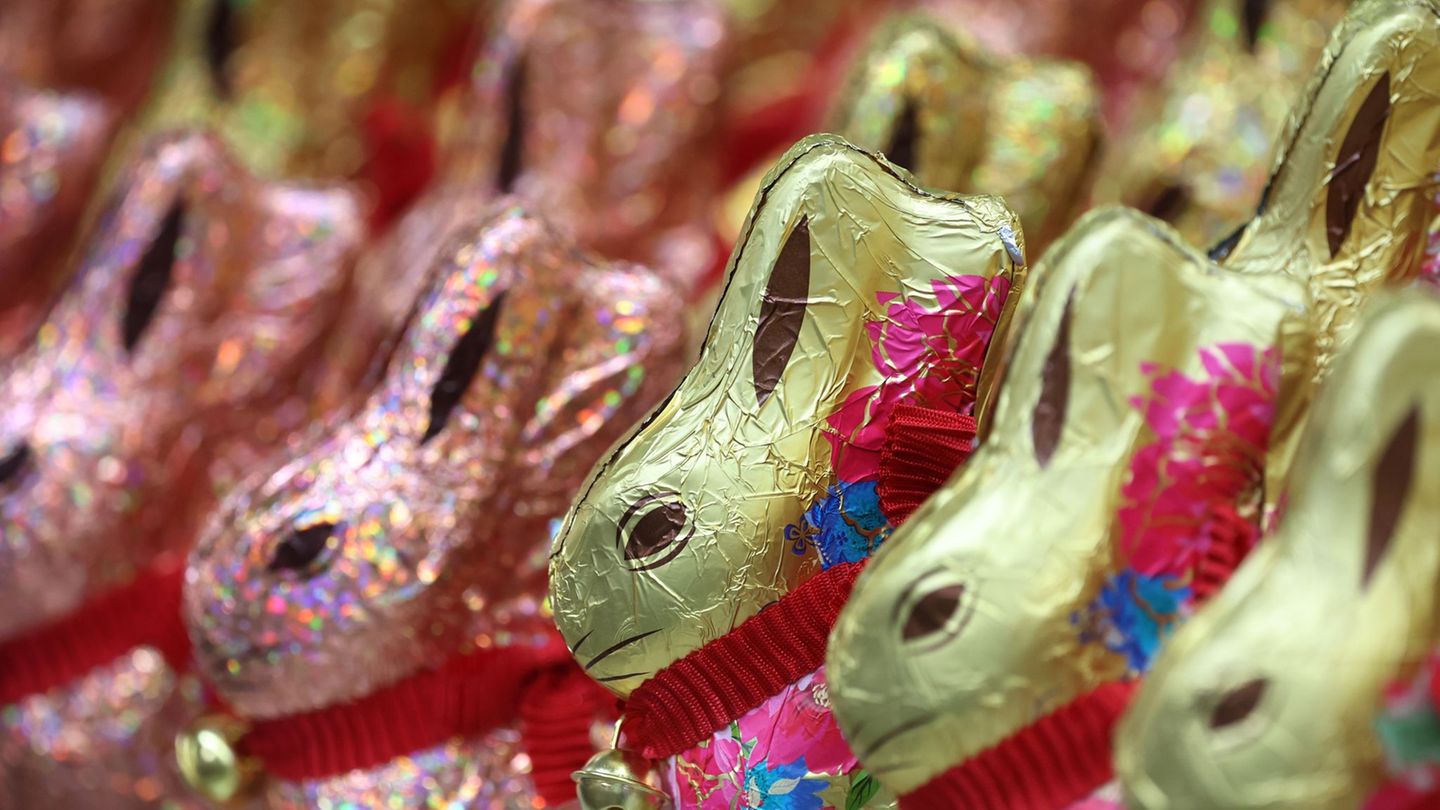Sweet to the festive days
Cocoa crisis in West Africa lets chocolate rabbits shrink
Copy the current link
Add to the memorial list
The Germans feel the record prices in chocolate when shopping for Easter. The reason for this is in West Africa. Chocolate fans have to be prepared for bitter.
Anyone who buys chocolate for the Easter nest this year pays significantly more and gets less. Record prices for cocoa on the world market are reflected in chocolate rabbits, chicks and Co. “We see the chocolate market in front of a wave of inflation that has hardly happened in recent history,” warns US investment bank JP Morgan.
In the supermarket shelf: less for more
According to data from the Federal Statistical Office, consumers in Germany receive a third less chocolate for every euro than five years ago. The popular “gold bunny” from Lindt costs for the first time with over 4 euros. On average, plates are almost a third more expensive than in the previous year, as numbers from the NIQ market researcher show for the first quarter. The Ritter Sport alpine milk variety now costs 1.89 euros instead of 1.49. And consumer advocates recently chose “Milka” of the Mondelez Group to “make the month”: While the purple table shrank from 100 to 90 grams, the price grew from 1.49 to 1.99 euros.
According to experts, the times of cheap cocoals are finally over. West Africa, where a good three quarters of all beans come from, feel climate change. Weather extremes, pests and mismanagement do the price. The harvest in Ghana collapsed by almost half in 2024 – the worst in two decades – and recovers less than hoped for this year. The ivory coast also reported bitter declines. The ton of cocoa was traded in 2024 for up to around 12,000 euros, six times as expensive as a few years ago.
On the field: maybe soon nothing more
Place of town in Ghana: Samuel in front of it, 67, stands with a sickle between 900 cocoa trees in a village in the west of the country. Instead of nine sacks beans, this plot delivered five last year. With almost 1.3 tons of cocoa, which overall his acreage overall, his wife and he earned around 2400 euros. His ten children also live from that. Cocoa maker hardly wants to become one of them-the 18-year-old Regina, who helps out during the holidays, prefers to tailor it.
Cocoa is sensitive. Too hot, too damp, too little rain, too much wind: everything can ruin the harvest. The weather in West Africa, where desert wind and rainy months alternate, was perfect for a long time. Now it becomes unpredictable. “In 20 or 30 years, there may be no cocoa from West Africa anymore,” says British raw material expert Tedd George. “Even with moderate heat scenarios, it becomes too dry and too complex.”
This year it rained too late in Ghana. The rain came too early before last season, mushrooms and pests spread in front of the trees. In Ghana, around 13 million sick cocoa trees had to be cut down last year after industry information. It takes up to five years for new trees to bear fruit. To replace the outdated inventory in good time cannot afford many farmers.
From the farmer to the dealer: with every level more expensive
From the supermarket prices, cocoa farmers receive just nine percent, according to a study of 2022, which cited the British NGO Oxfam. According to a new Oxfam report, Ghana’s farmers earn less than half of what they need to survive. “Cocoa is a market in which the producers produce a very valuable asset, but only receive a very small proportion of actual added value,” says agricultural raw strategy Tracey Allen from US investment bank JP Morgan.
Ghana’s cocoa authority buys the beans from the farmers for about 70 percent of the expected price for the season. This year this is about 3,000 euros per ton – more than ever, but even less than is currently being achieved on the stock exchanges. According to market experts, the cocoa mass is resold for around 20,000 euros. The supermarket price for a ton of “Goldhase” by Lindt & Sprüngli is around 43,000 euros. A spokeswoman said that the price increases had to be passed on. The Swiss chocolate group nevertheless made 715 million euros in profit in 2024.
There is no way around West Africa’s cocoa
The industry is aware of the situation and puts money in sustainability programs such as that of the NGO Rainforest Alliance, which works in Ghana with a good third of the cocoa farmers. Samuel in front of it has planted shade-giving trees and crops, improved the floors with cocoa shell compost and created beehive. The idea: higher yields, less deforestation, additional sources of income. Before that, that helps him, but he simply wants higher prices. The Oxfam organization calls for more direct payments from manufacturers and supermarkets.
According to the industry, there is no way around West Africa. Around 80 percent of the cocoa in Germany comes from the Ivory Coast and Ghana. “If only because of the large import quantities and the planting period, a short or medium-term serious change from these two countries would be unrealistic as the main supplier for Germany,” says the Federal Association of the German confectionery industry (BDSI). “In addition, the EU renovation regulation has severely restricted the rescheduling of cocoa in new growing areas.”
Less chocolate rabbits-or less chocolate in the rabbit
For chocolate lovers, cocoa expert Tedd George sees a terrifying scenario: the candy itself could change. “It will still look and taste the same, but it will contain less and worse cocoa,” he says. Manufacturers are already experimenting with recipes to replace cocoa butter with cotton seed oil.
Chocolatiers are sensitive to emphasize that this is not up for debate despite the pricing. “We are currently not seeing that these replacement products can be made chocolate that triggers the associated moments of pleasure,” says a spokeswoman for Ritter Sport. “Despite cost pressure, we stick to the high quality of our premium products,” says Lindt & Sprüngli.
In Germany, prices already affect chocolate consumption. According to the number of market researchers NIQ, 10 percent less table chocolate and 20 percent fewer chocolates were sold at the beginning of the year. According to the BDSI association, the German confectionery manufacturers produced only 228 million chocolate east bunnies due to the prices-12 million less than in 2024.
dpa
Source: Stern




